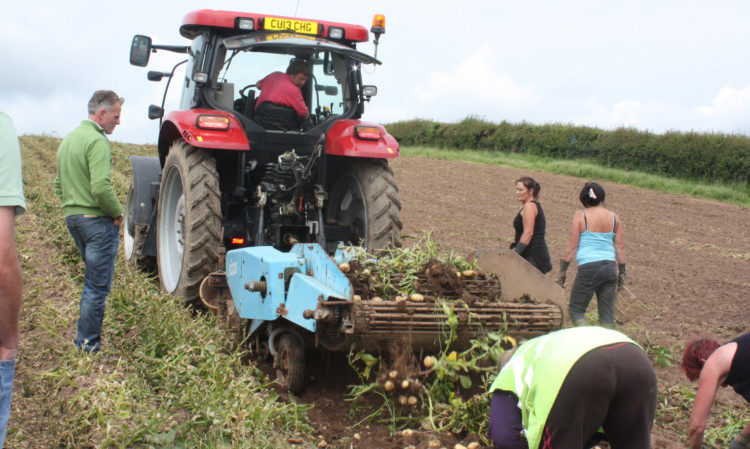In agricultural terms Pembroke used to be synonymous with the production of early potatoes.
It is an industry which still maintains a toehold, with around 120 acres grown in the most favourable coastal locations, but it is a pale shadow of the days when 7,000 acres or more were planted each year.
Jersey growers now dominate the market.
However, there is still a thriving market for second early and maincrop potatoes grown in this part of west Wales.
Richard Hayman grows more than 400 acres and is chairman and director of the locally based marketing organisation Puffin Produce.
He told touring members of the Edinburgh Agricultural Society that the company is 51% owned by an 18-strong grower group, with the balance being held by the East Anglian marketing organisation Fenmarc.
“Welsh people are very keen to buy Welsh produce and we are able to capitalise on that by supplying most of the major supermarkets.
“Puffin started in 1986 in a small office and has grown massively. We recently spent £11 million upgrading the packing lines with massive support from the Welsh Government and a processing and marketing grant Scheme,” Richard told the visitors.
He also has his own grading line on his immaculately maintained Norton Farm near Milford Haven.
A modern packing line complete with automatic 25kg bag pallet stacker was this week handling the last of his 2013-grown Maris Piper.
His major market is supplying fish-and-chip shops around the Welsh coast. Richard has more than 70 such shops on his customer list, and it is clearly a thriving sector.
As an example, the Tenby area with its huge concentration of caravan parks has a winter population of only 1,800. Over the summer this swells to 45,000, and many of the holidaymakers like nothing better than a fish-and-chip supper.
There are limitations in the area, with field size relatively small and many farmers growing five years of grass followed by potatoes and back into grass again.
Annual potato rents are typically between £350 and £400 per acre.
However, Richard does still grow some earlies and this week had a hand squad at work lifting some short drills of Minerva on a south-facing field just a stone’s throw from Milford Haven inlet.
The crop was covered after planting but not irrigated. He estimated the crop at 15-16 tonnes per acre and was selling at around £400 per tonne.
Once the short drill had been lifted he intended to use one of his two Grimme trailed harvesters on the main part of the field.
“The early crop is not stone separated we cannot afford to lose nature’s storage heaters,” said Richard.
Growing good early crops is clearly an art. Richard thought the crop could have been a day or two earlier to harvest.
“That’s because you ploughed an inch too deep!” chided his semi-retired father, who had suddenly appeared at the back of the group. He recalled growing early potatoes for 37 years in succession in the neighbouring field.
